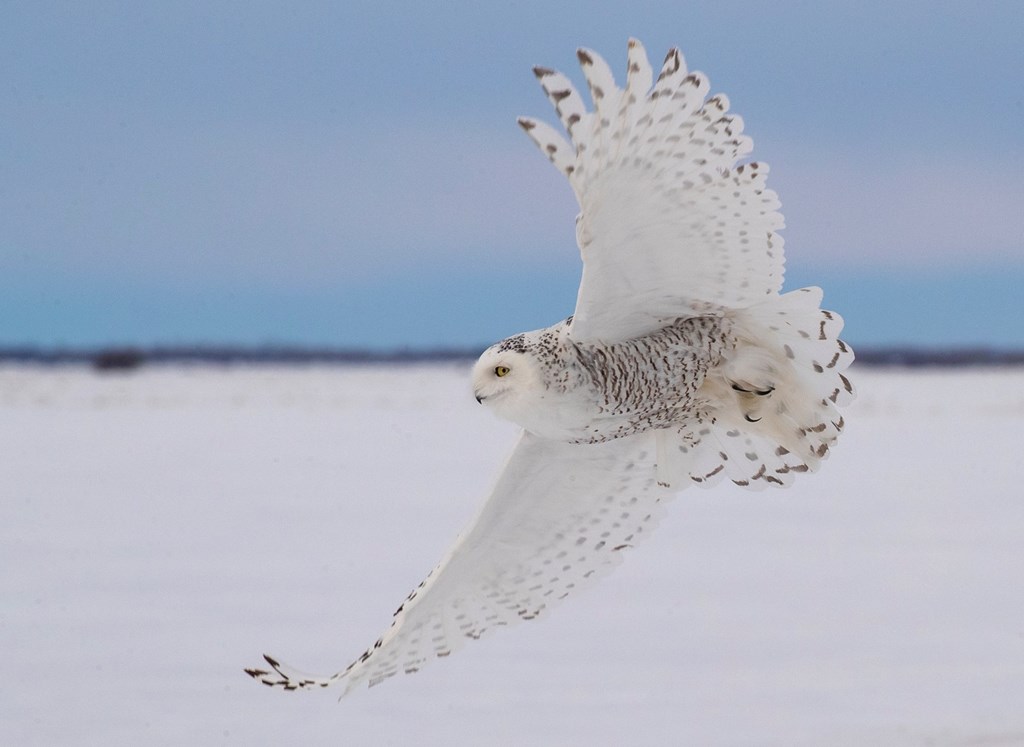Hawk Mountain Scientists and Collaborators Publish Groundbreaking Assessment on Snowy Owl Population Trends
Posted on January 24, 2025 in Science

Hawk Mountain scientists and a group of global researchers recently worked together to produce an insightful yet alarming look into the worldwide population trends of the charismatic snowy owl. The publication, “Status assessment and conservation priorities for a circumpolar raptor: the Snowy Owl Bubo scandiacus,” was a large collaborative effort between 39 co-authors, including Research Biologist Dr. Rebecca McCabe and Senior Scientist and Graduate Study Director Dr. J.F. Therrien.
It is the first assessment of its kind to be completed on the snowy owl, offering critically important insight that will guide future conservation efforts. The paper, published in the peer-reviewed journal Bird Conservation International, evaluated current global population trends of the snowy owl, a species whose conservation status is often difficult to accurately define due to their remote breeding ranges and irruptive migratory behaviors. Accounting for their nomadic ecology, the research team compared long-term breeding data, genetic studies, satellite-GPS tracking, and survival estimates from several long-term monitoring sites across the Arctic.
“Although this is a great achievement for Hawk Mountain, the most exciting thing for me is to see all these people coming together for the greater good of snowy owls,” says McCabe of the collaborative effort that took several years to complete.
“Collaboration among the science community is so important, and this assessment truly demonstrates that. We can only do so much on an individual level, so it is important to make those connections and work with people who share a common goal. Above all, my hope is that the work we’ve done here will benefit snowy owl conservation efforts, and I know that sentiment is shared among everyone who worked on this.”
Researchers initially sought to justify or refute the 2017 change in the global status of the snowy owl from “Least Concern” to “Vulnerable” by the International Union for Conservation of Nature (IUCN) global Red List. This relisting was based on “an observed, estimated, inferred or suspected population size reduction of 30% over the last 10 years, or three generations,” but required more sound evidence.
The results estimate the current global population of snowy owls to be somewhere between 14,000 and 28,000 breeding adults. This not only justifies the IUCN’s uplisting but also shows that snowy owl populations are considerably lower than previous estimates.
Read the full assessment here: